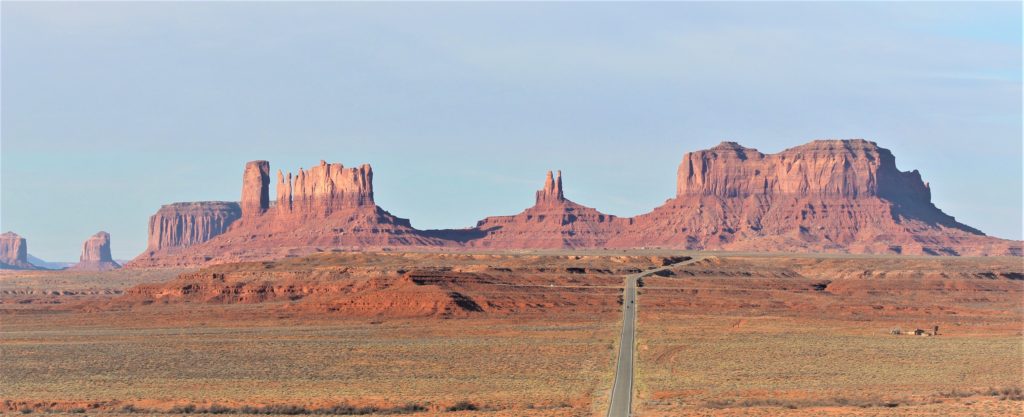The Monument Valley Tribal Park a huge area that straddles Utah and Arizona that contains some of the most scenic rock formations in the world. It is the product of 50 million years of erosion and lies entirely in the Navajo Nation Reservation territory. Normally, you can take Navajo tours in and around the entire valley with a Navajo guide, however in mid-March the Park was still shut down by the Navajo due to the pandemic. Fortunately, we could still see quite a bit as Route 163 winds through the heart of the valley and is open through for traffic. Further, the resort we stayed at owns a large tract of remote land that we were able to see with a guide.
Our Navajo guide showed us many of the Monuments and explained their significance to the Navajo. He showed us how the tribe used to live in wood and mud huts called Hogans. In contemporary times, they generally live in “ranches”: modest homes on plots of land that are quite spread out. They often have cattle or other animals that graze on their ranch. Some are in remote areas that don’t have electricity or water. Our guide referred to that as “a bit of a challenge, especially with kids”.
Many of the valley views are familiar because a large number of Western movies and TV shows have been shot here over the past 50 years. John Wayne and John Ford were some of the “regulars” in the park. One of the most famous Forrest Gump scenes was filmed on Route 163 in the north end of the valley. As a result of long-time and massive media exposure, many people view Monument Valley as the quintessential Southwestern United States.
Not only are the sights in Monument Valley amazing, but the scenes coming in, out, and around the Valley are often just as striking. We drove over 100 miles to the north to see Natural Bridges National Monument. The scenery along the way was awesome and we made several stops to take it all in. Natural Bridges is a hidden gem that includes three of the largest natural stone bridges in the world. Additionally, it includes the Horse Collar Ruin. This ancestral Puebloan site was occupied about 700 years ago is a very well preserved due to its remote location in the White Canyon.
Like many of the venues we’ve been to during the COVID year, it wildly surpassed our expectations. It’s not a particularly easy place to get to, but well worth the trip if you’re in the area.





































